Project AT1: Where to start with a barn-find motorcycle
No matter how old we get, we keep daydreaming. It’s these hopeful visions of what’s possible that help fuel the proliferation of the barn find trend. So let’s all close our eyes and ponder: What you would do if you opened that random garage door and found a big-block Chevelle or Series 1 E-type? Where does one even start in bringing a project like that back to life?
As the venerable Tom Cotter has said any number of times on the Barn Find Hunter video series, it certainly involves more than just dropping in a fresh battery, airing up tires, and turning the key. Fortunately, it’s a lot easier to bring a bike back to life than a car.
To help illustrate the what this process requires in reality, I went out and snagged a perfect example of a two-wheeled barn find: An early ’70s Yamaha AT1 motorcycle. It got put away at least 15 years ago and hadn’t moved let alone run or got any attention in many, many years. Once I decided if it was wise to pull the trigger, it was time to organize a game plan. Stick with me as I …
Set a plan and a budget
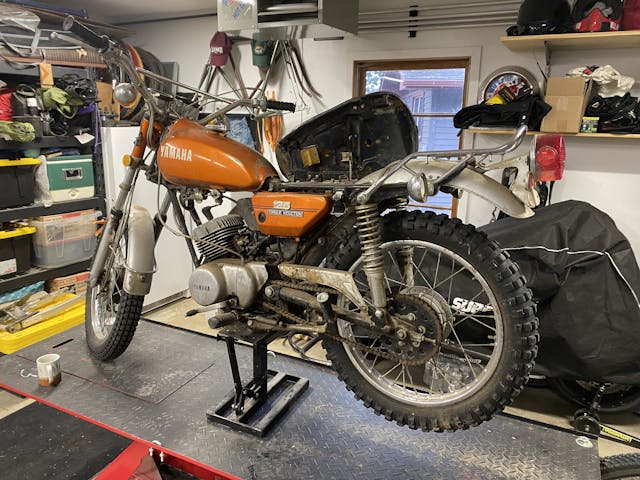
Is this a full restoration? Bare minimum to get it running and enjoyable? An attempt to simply lock in the time-capsule look and stabilize the bike for even longer storage?
Each of these approaches comes with its own priorities, and picking a goal will steer your decisions moving forward. There is no shame in admitting you bought something just because it was cool, but now that it’s home you probably need to figure out what you are actually going to do with it. Writing out your plan and setting a budget give you guardrails on the path this project will take. You will certainly hit these guardrails, and how rigid they really are is up to you. These check-up points help keep things from rapidly spiraling to a bare frame on the floor or an empty bank account when “while I’m in there” syndrome attacks.
Start your list
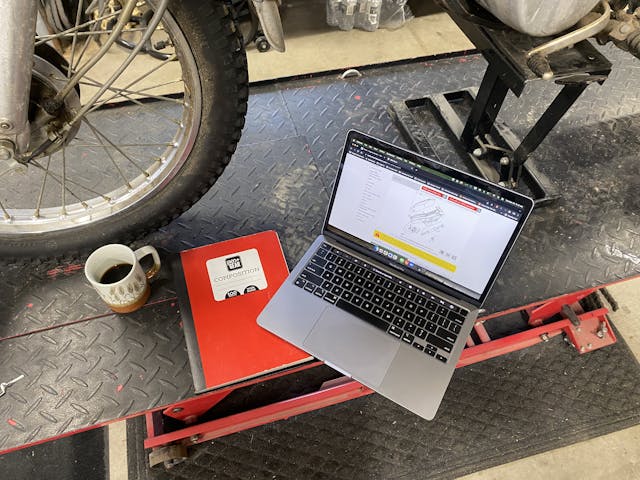
The key to any successful project is organization. Now is the time to start writing down what you know, what you need, and whose brain to pick. The human brain is not an iron trap, so it has a way of letting valuable information slip away into the ether (more often than any of us would care to admit). All the details that the seller told you should be the first things you write down so you aren’t left trying to recall exactly what they said, and what kind of work was or wasn’t done. Start the list of parts or materials you already know you will need; at the top of that particular list should be a factory service manual.
Find what’s missing
In a perfect world, this step would have been performed before purchase, but we are being realistic by including it in the post-purchase steps; there is often a lot going on during the inspection and buying process. Long-stored cars are often pilfered for parts or half-disassembled for one reason or another. Sometimes that’s why it ended up in the barn, other times it was an attempt to get it out of the barn that fell short. Regardless, it’s more than likely that parts of your new treasure are no longer with it. If you are very familiar with a particular model you can spot the items that went AWOL, but most people will need a little help to find exactly what is gone and determine the importance of each missing component.
I have found that referencing assembly drawings or exploded images is a great way to accomplish this step. Finding these drawings in service manuals or parts fiche catalogs is the best way I’ve been able to consistently get clear and accurate drawings. For motorcycles like this AT125, my go-to is Rocky Mountain ATV MC where I can select various systems and drawings for many vintage and modern motorcycles, ATV, and some watercraft. This shows me not only what each part is, but gives me part numbers and how it interacts within the system. Use this to identify parts in the boxes that came with your barn find as well.
Take photos. Lots of photos.
All that dirt and grime holds information, believe it or not. Witness marks of what was leaking, what had been disturbed or disassembled, and what has been absolutely neglected. Taking photos to document exactly what you brought home is good to have for the future before/after picture, but also as a reference should you need to double-check your own memory of your the project’s starting point. Make references in your master list for the car to specific photos easily by writing number on sheets of paper and putting them in the frame of the photo. You can then easily find these by photos by saving the files to Google Photos or some other cloud service where the AI powered search can sort through hundreds or even thousands of photos and find just the one you need when you search just the number in the image.
Get to cleaning
For me, cleaning is both the most critical and least fun process in this whole adventure. Careful cleaning will do one of two things for you: reveal more problems than you ever imagined, or show just how sharp you were to buy your barn find. For my AT1, the process included a pressure washer, Simple Green, and a soft scrub brush to break up the caked-on grease. For something more delicate it might mean a careful hose rinse followed with a specific list of products to lift the dirt and preserve the finish underneath. (Exactly which products depends entirely on the surface material as well as the nature of the soil.) Picking between those two extremes is actually quite easy when you reference your plan and budget …

This might seem daunting. But look at the bright side: you finally have a vehicle ready to start turning wrenches on. I have a goal of making this little Yamaha a running and riding machine, with virtually no focus on cosmetics. So, for next week’s installment on Project AT1, we will dive into best practices for checking the health of an engine and other mechanical systems before putting on the paddles and attempting to restart your project’s heart.

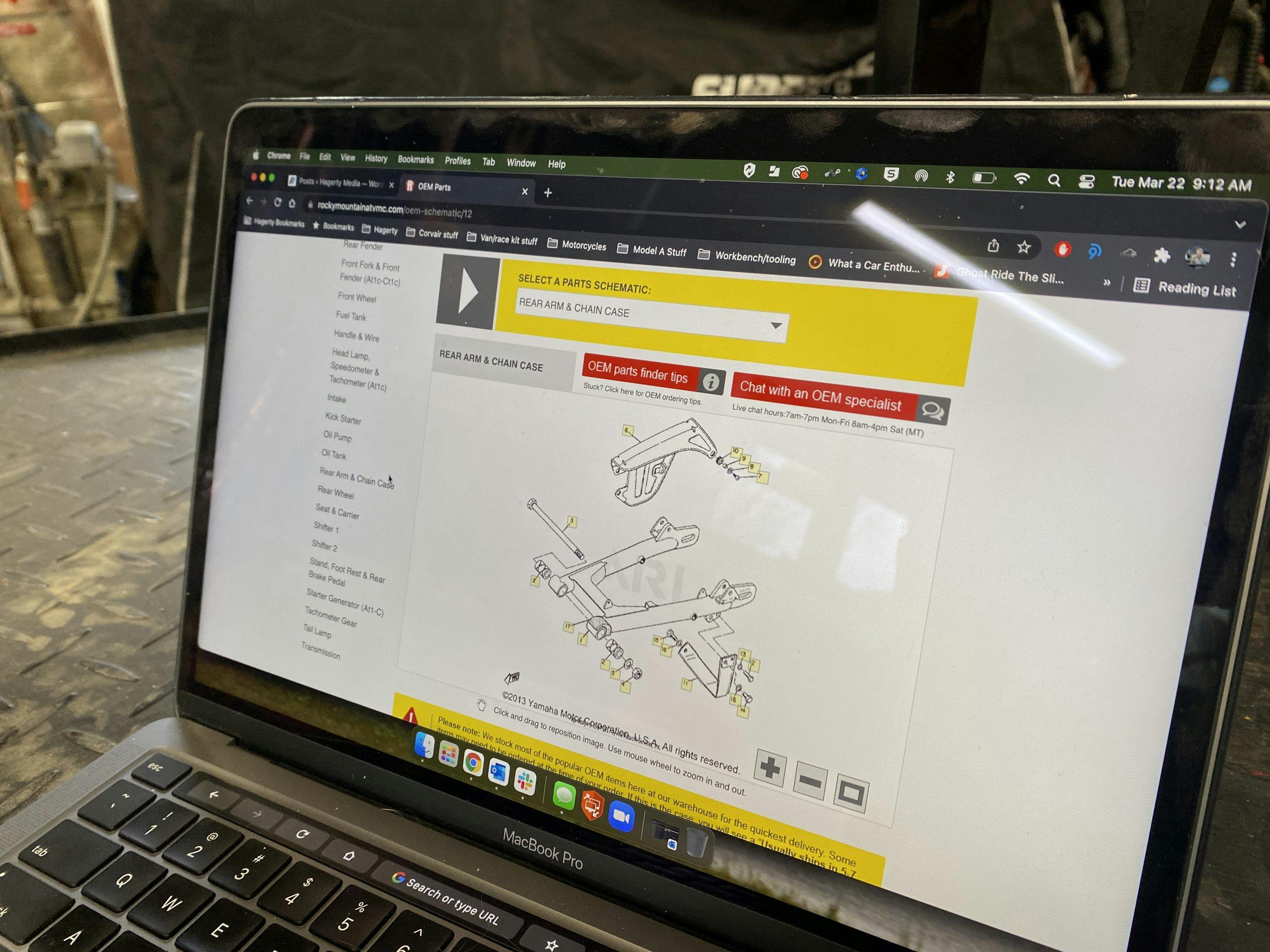

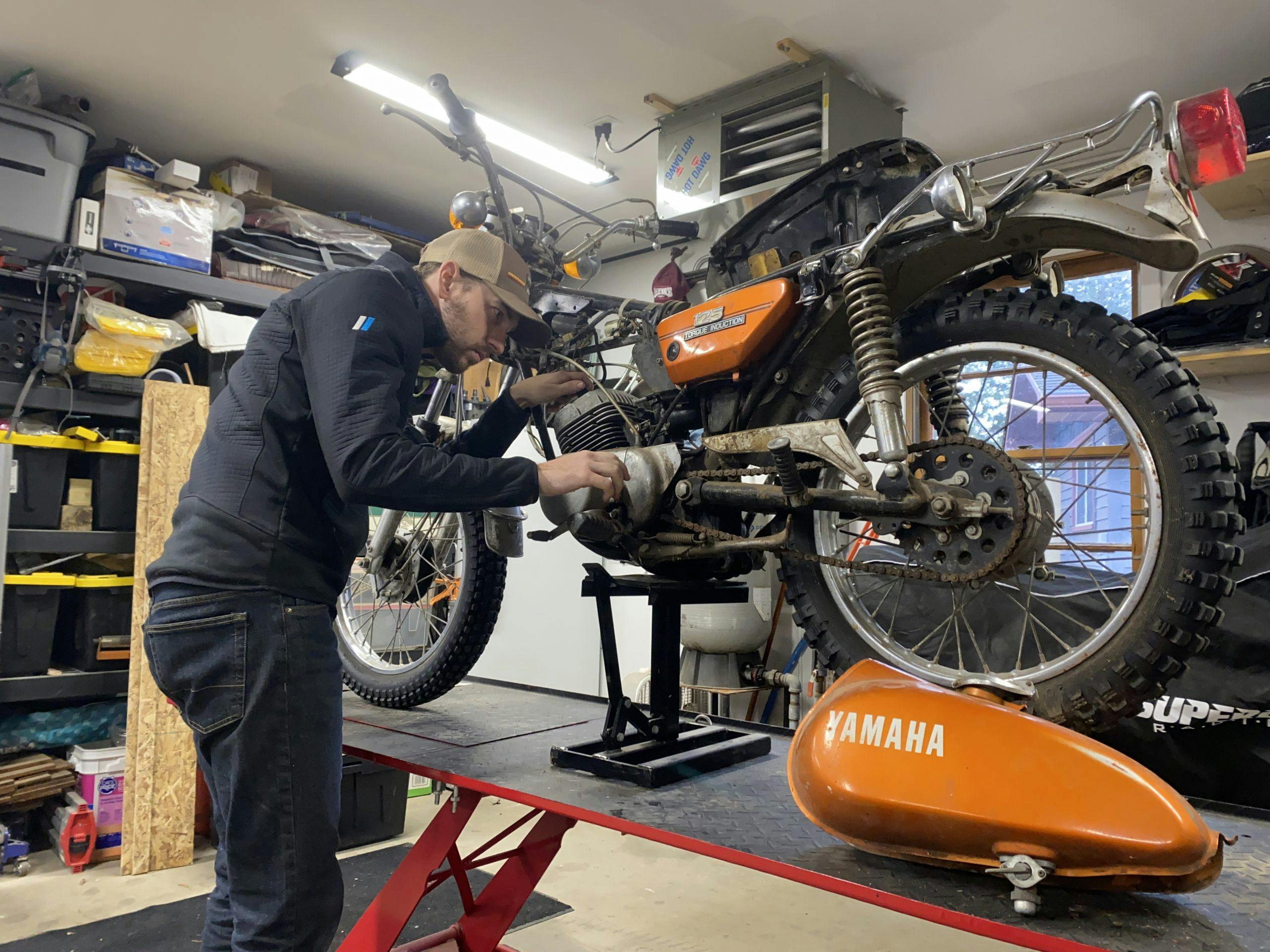
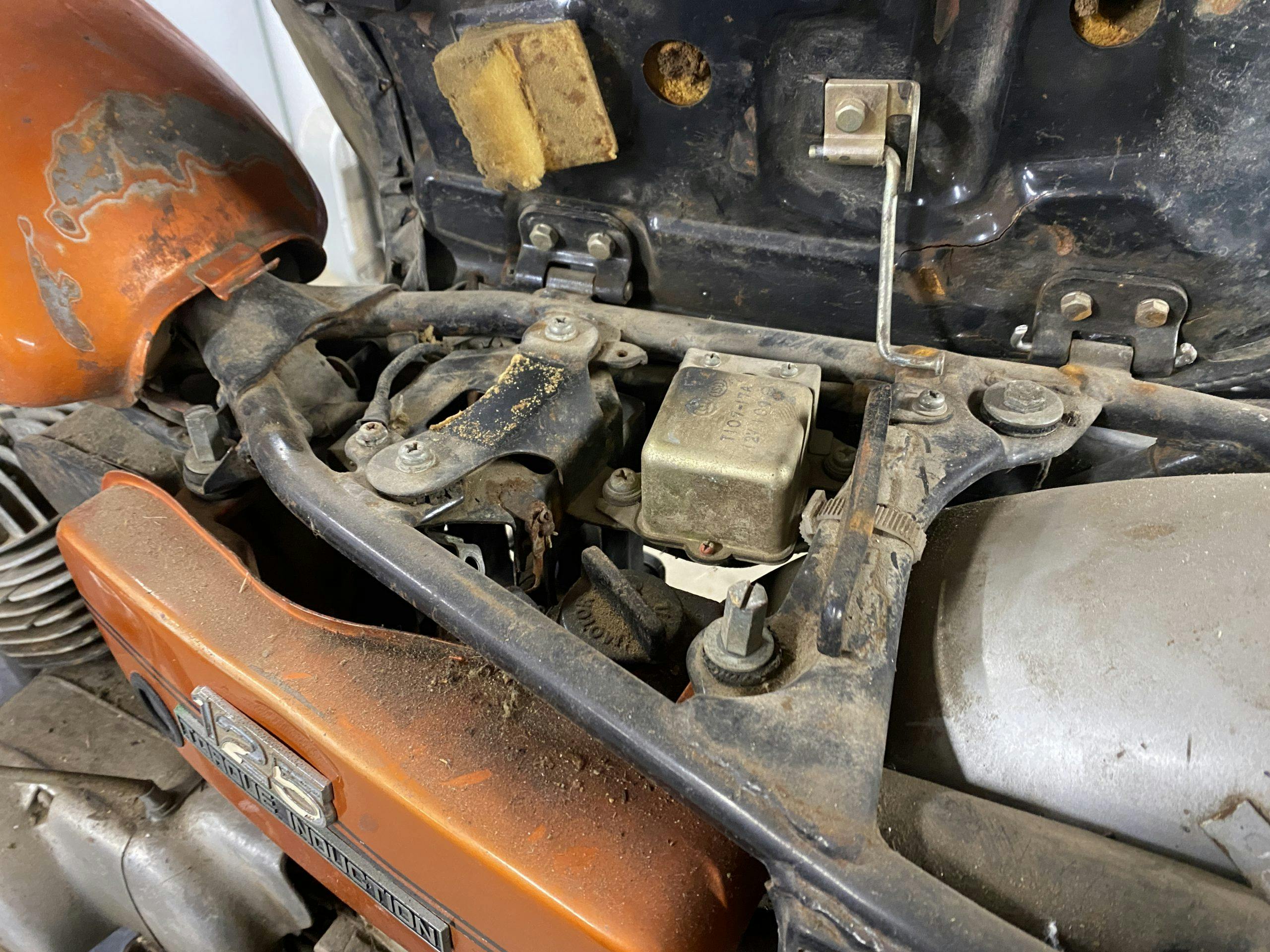
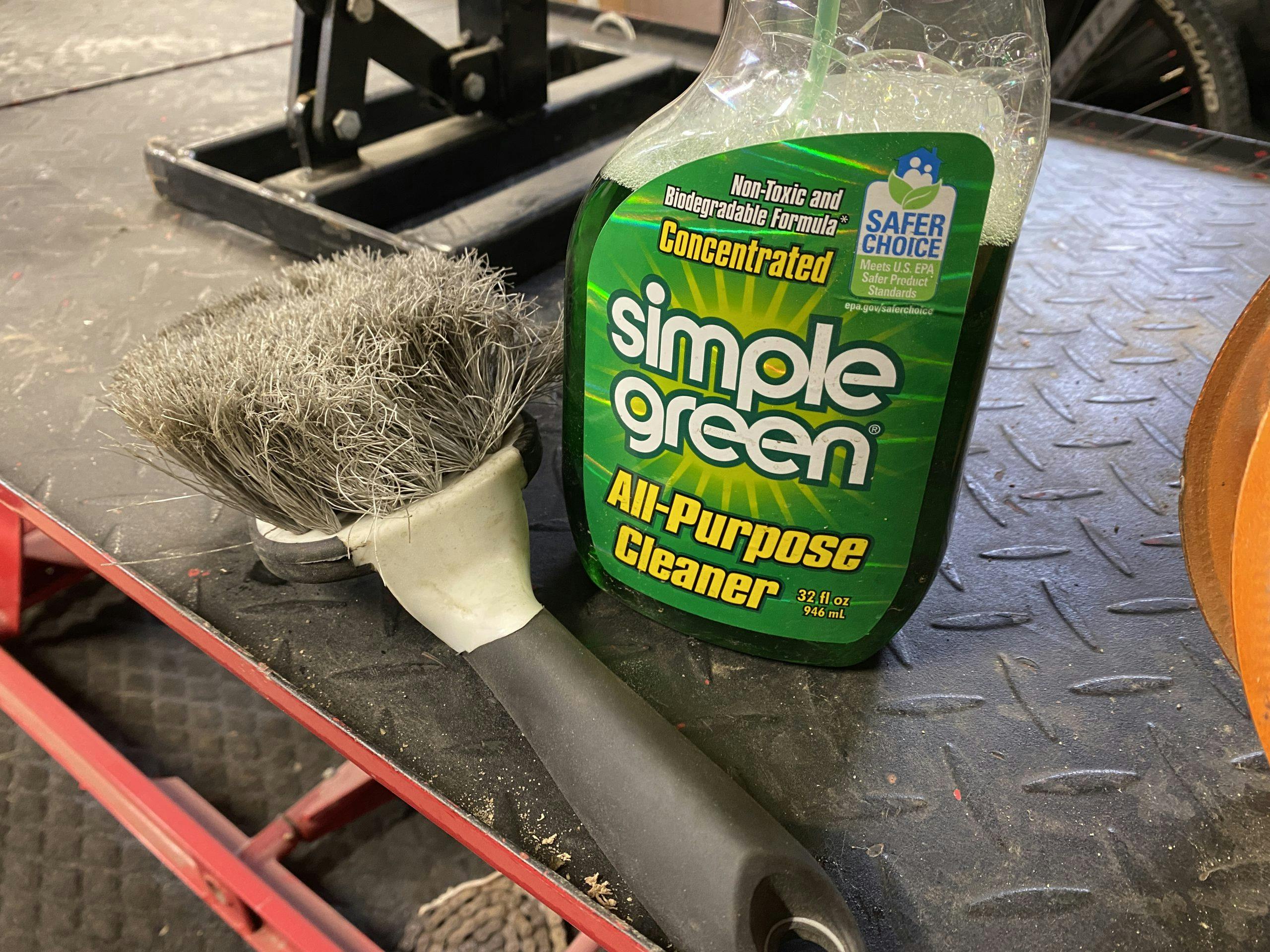
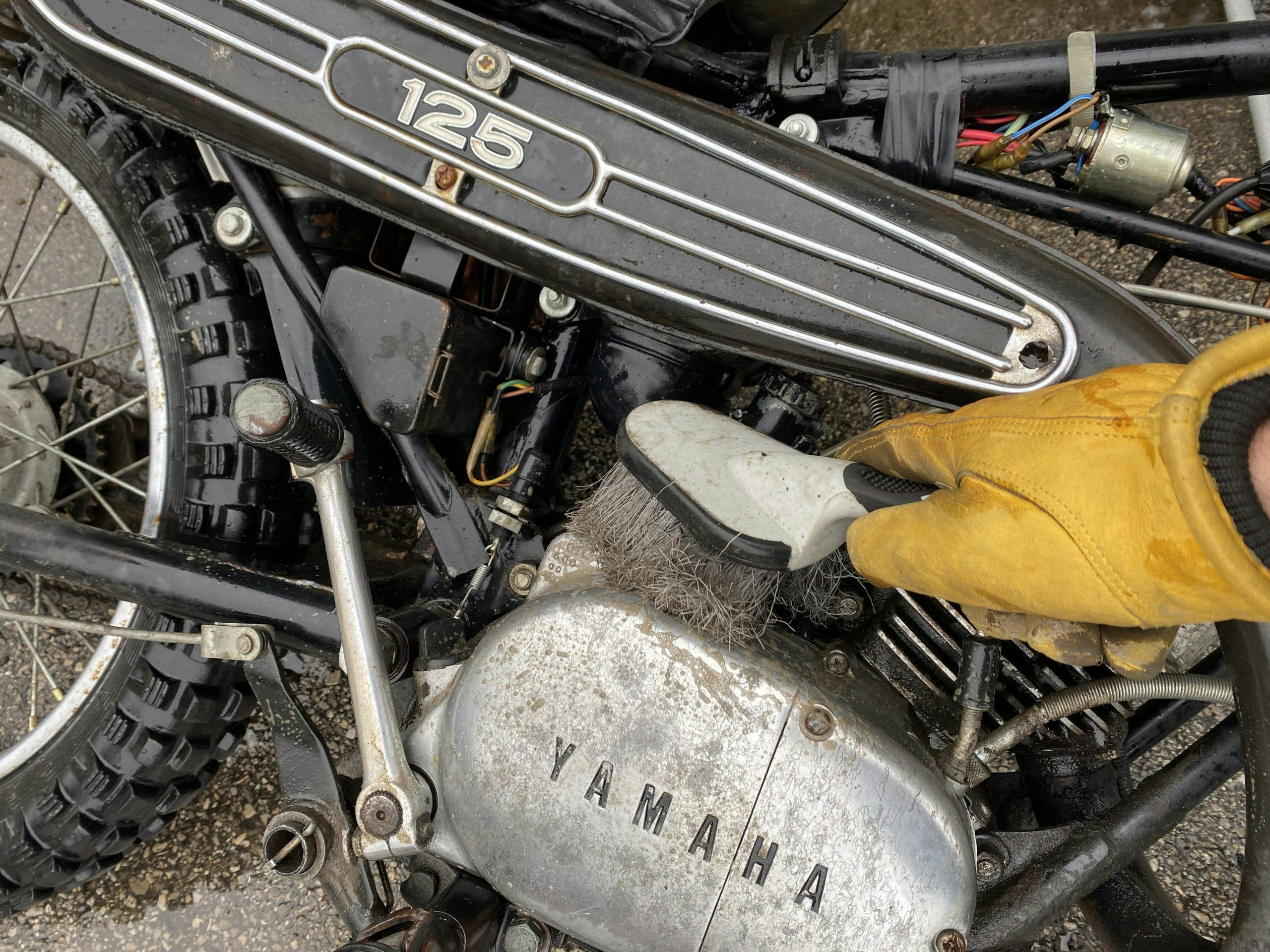
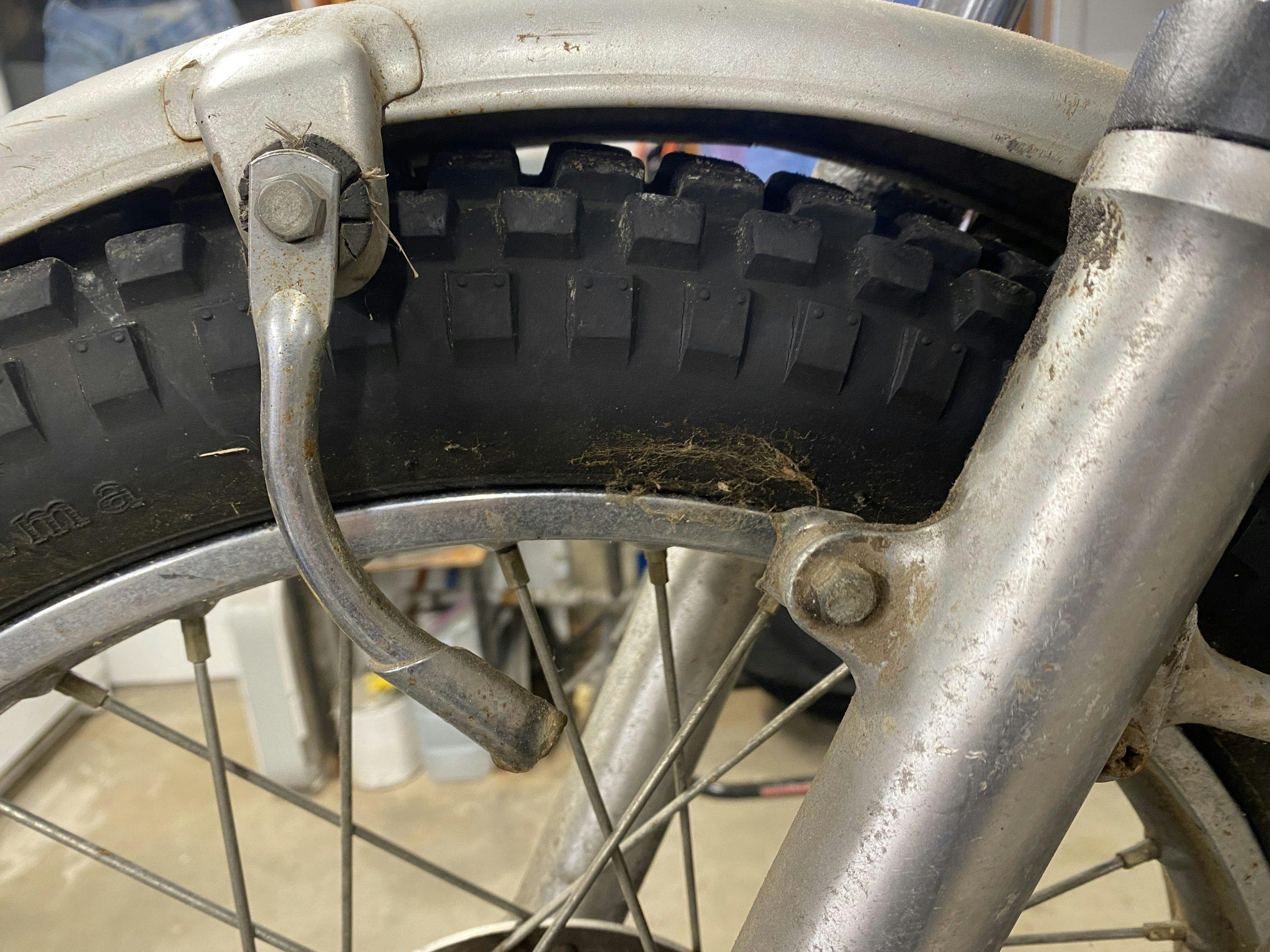
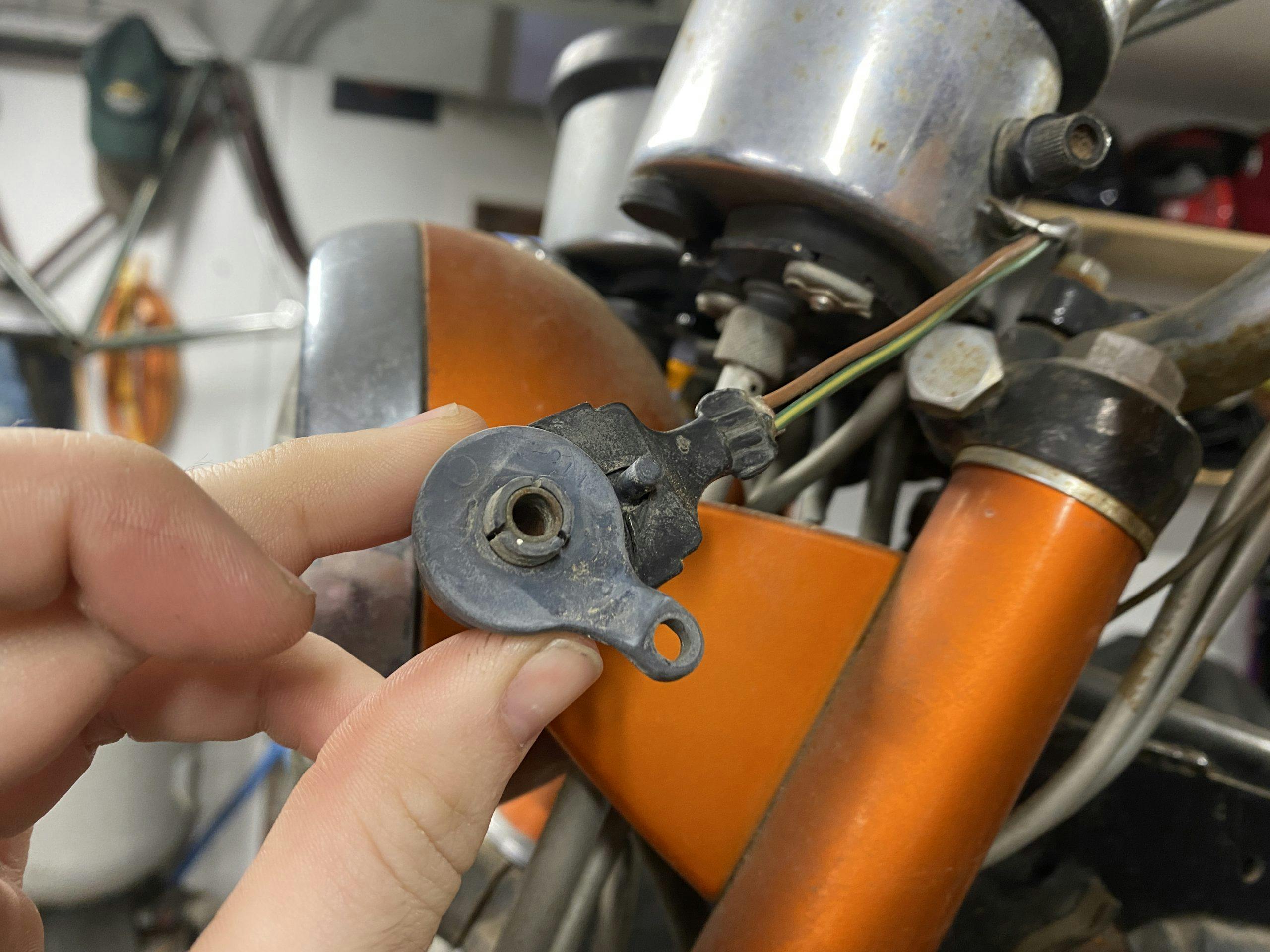

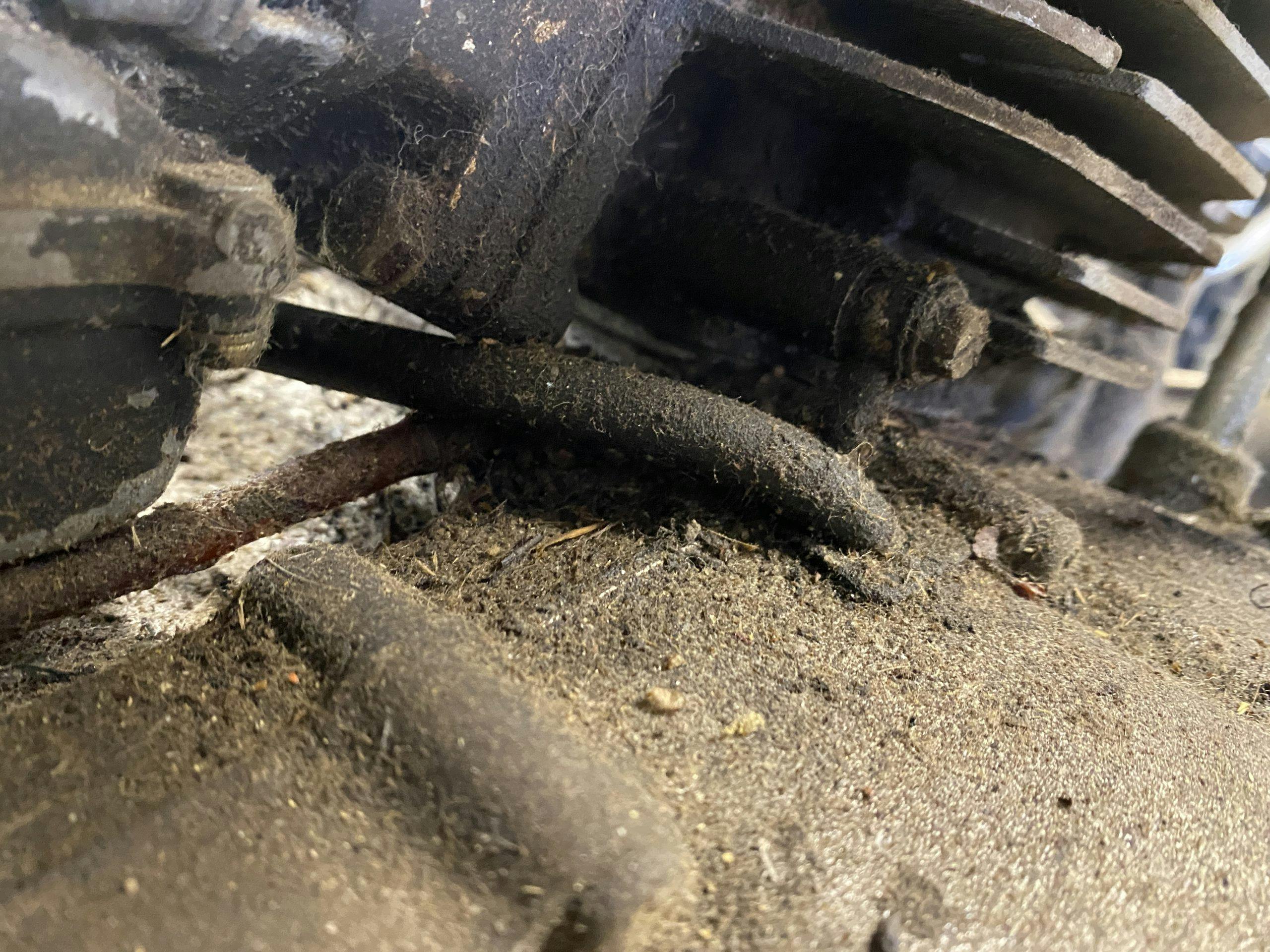
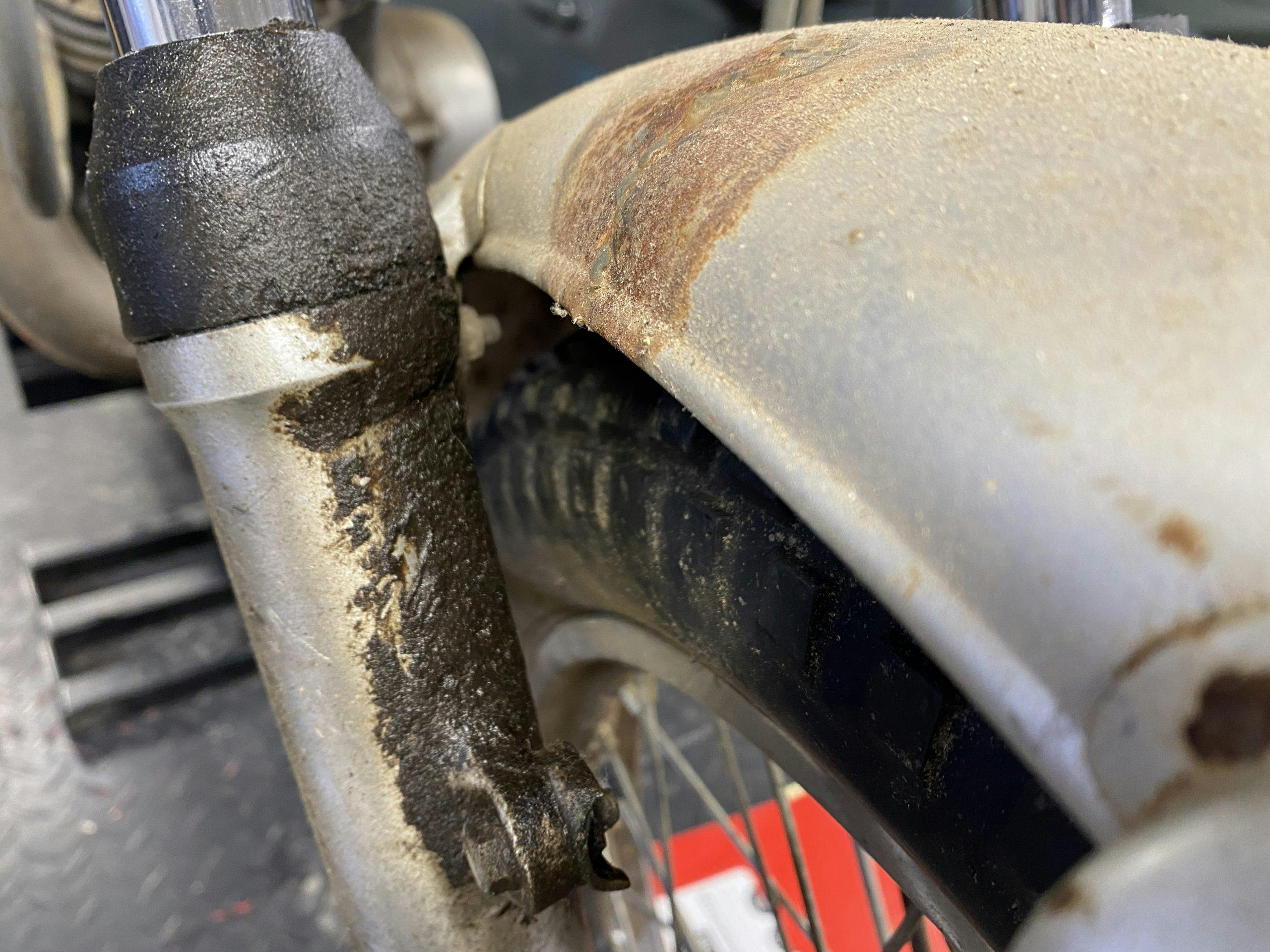
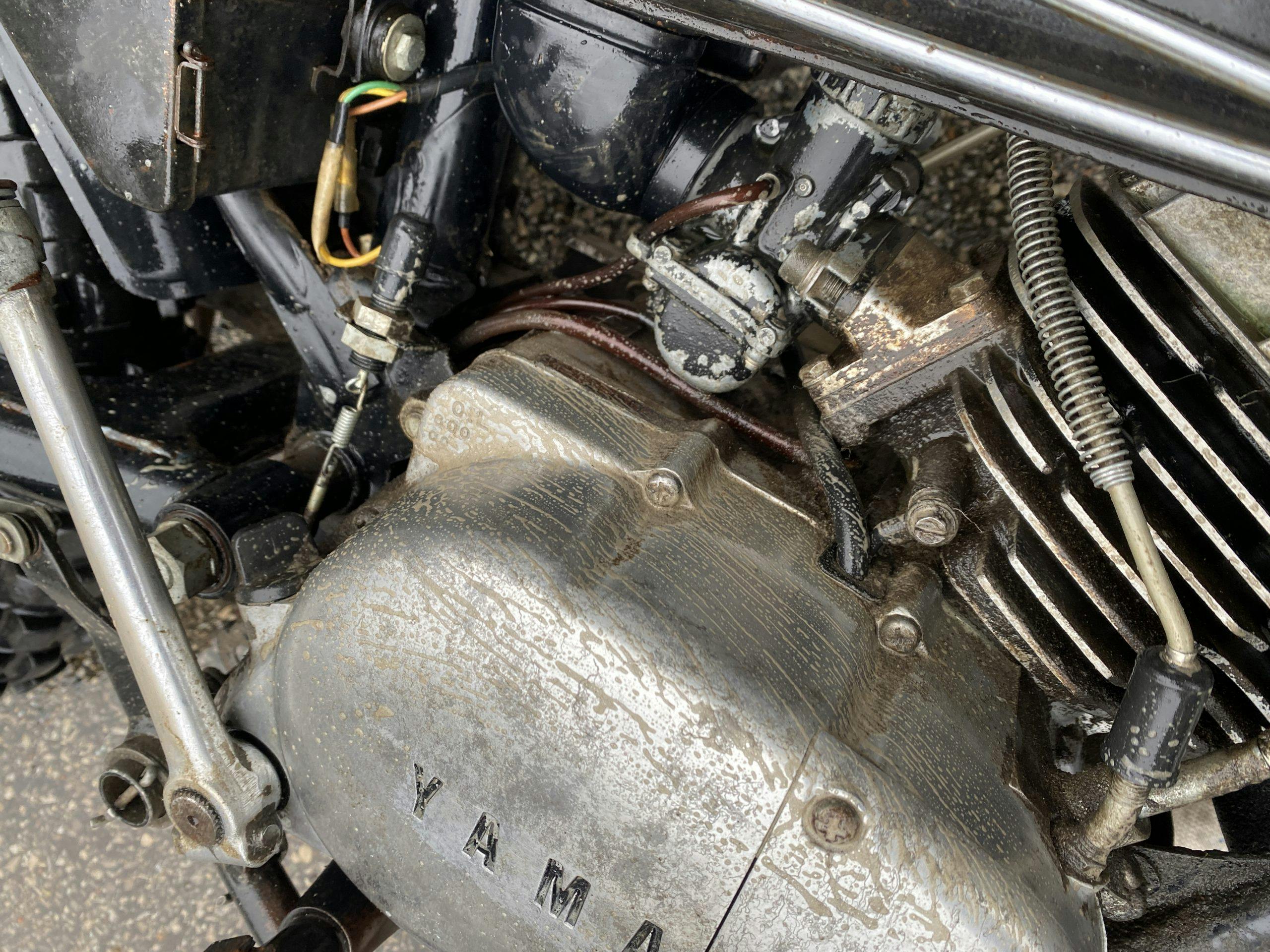
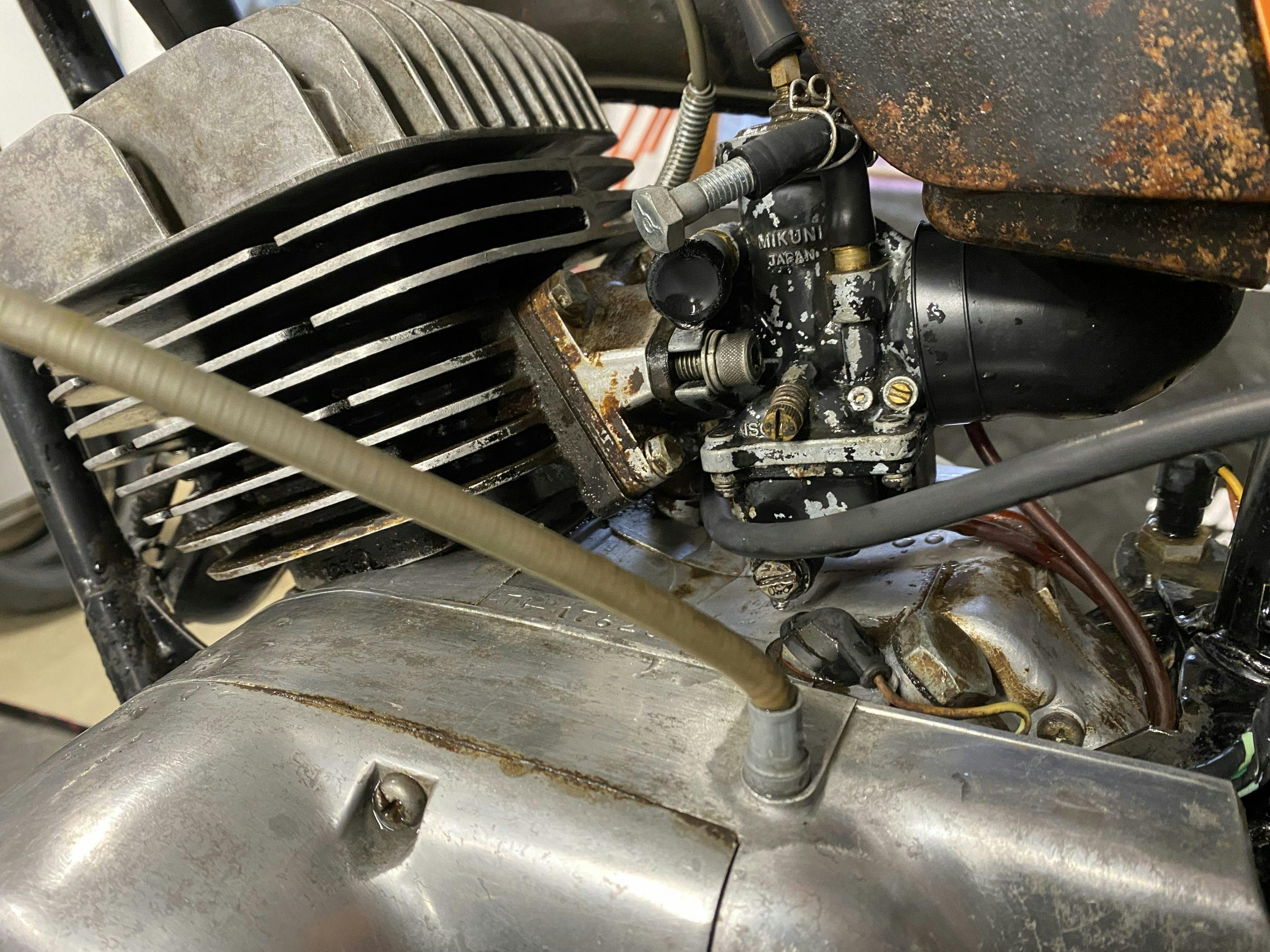


Hi Mate will make a nice machine when running and tidied up, used to have a CT 1 175 when young never ran right, have had 4 DT 175 MXs after that, Have loved 2 strokes from 17 years old still love them today, Still own one a 1974/75 Honda MT 250 Elsinore Trail use it regular and go to Matlock Derbyshire some weekends and it gets a lot of attention, Mick Derbyshire